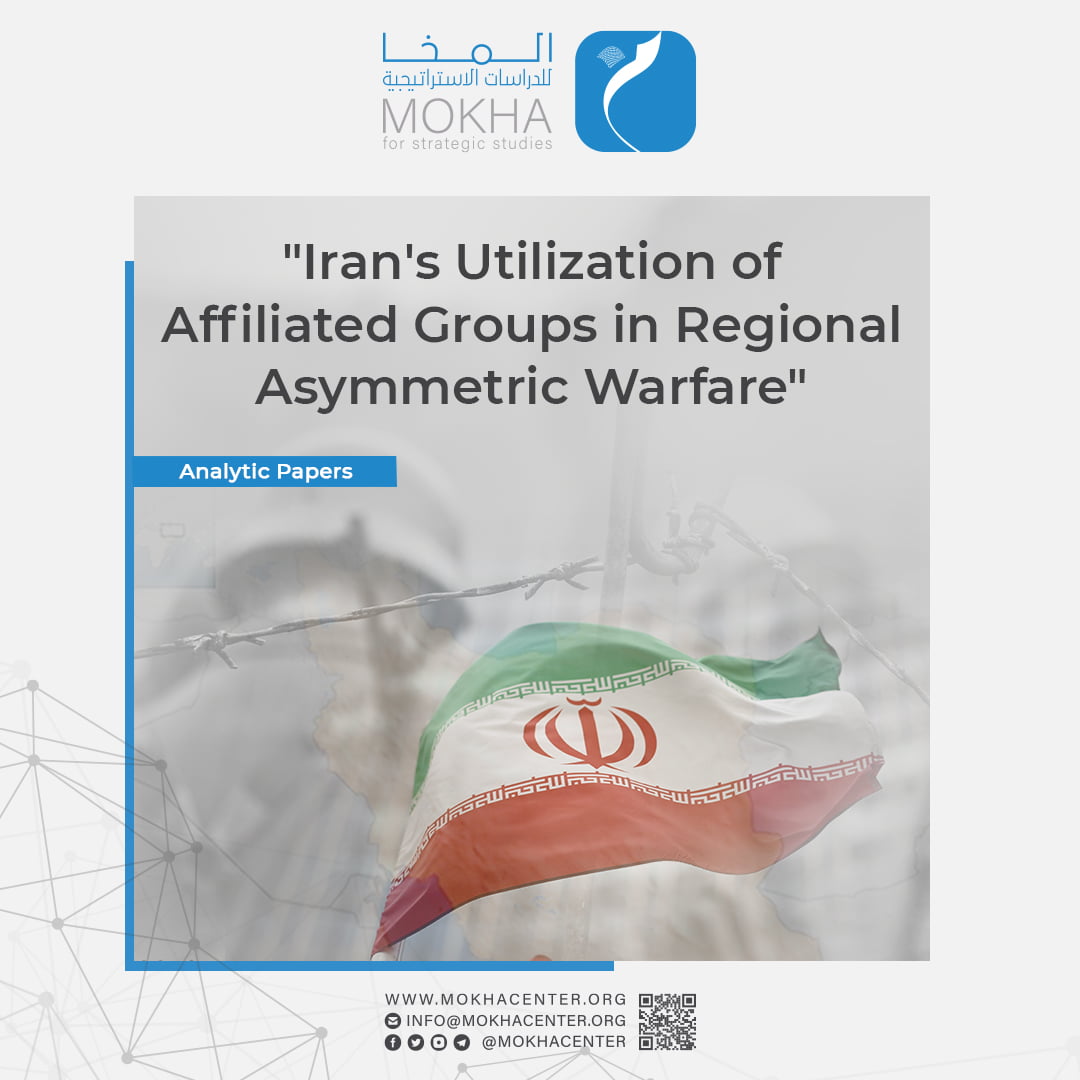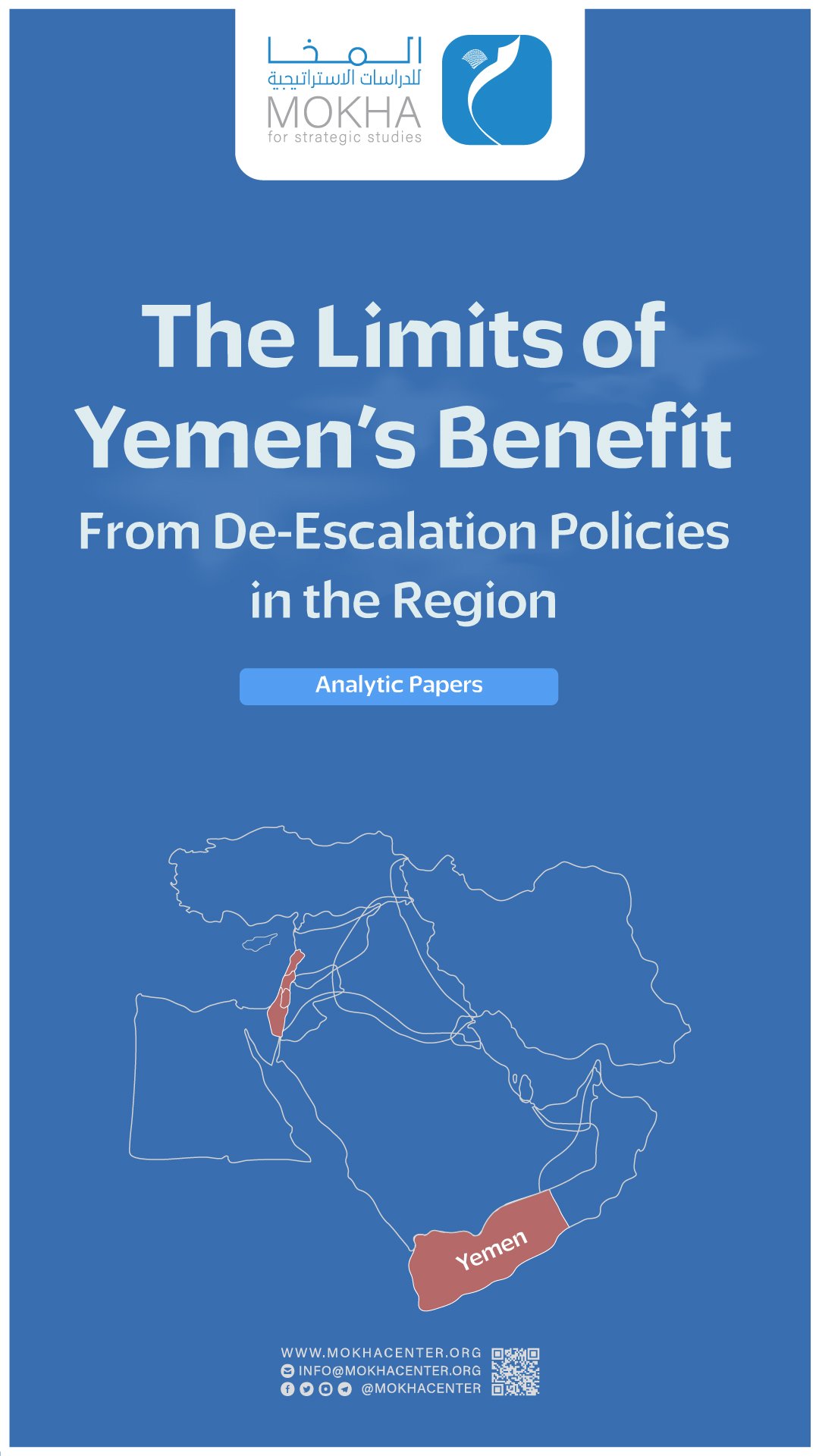Withdrawal of Joint Forces from the Western Coast of Yemen: Motives and Implications

| Getting your Trinity Audio player ready... |
Contrary to what was expected, the military units of the Joint Forces, on the western coast of Yemen, carried out a withdrawal on Wednesday and Thursday, 10th and 11th, November, 2021, to the city of Khokha, 163 km south of the city of Hodeidah. These forces were stationed on the outskirts of the city of Hodeidah, near the airport, and the areas of Al-Jah, Kilo 16 and Al-Durayhimi, all of which are direct contact areas with the Houthi militia at the entrance to the Hodeidah city, which is located on the western coast of the country.
Those withdrawals seemed surprising, and not without excitement. Although they coincided with the visit of the UN Special Envoy to Yemen, Hans Grundberg, to the strategic city of Mocha. The United Nations and its mission in Hodeidah confirmed that they were not aware of this step in advance. The same applies to the government committee in charge of implementing the Stockholm Agreement regarding the Hodeidah governorate. The committee confirmed, in a statement, that the repositioning of these forces took place without any prior coordination with them.
The withdrawals of the Joint Forces also took place in light of the intensification of battles on the outskirts of the city of Marib, east of Sana’a, and the growing demands to activate the Hodeidah battlefront in order to relieve pressure on the national army in Marib. In addition, the withdrawals on the Western Coast came in light of the sudden withdrawal of the Saudi forces from the city of Ataq in Shabwa governorate, and from their large camp in the Buriqa area in the city of Aden. Hence, these withdrawals have many ambiguities.
In addition to the sudden withdrawal of the Joint Forces, the withdrawal process was associated with confusion. Media sources indicated that military units were attacked by the Houthi militia during their withdrawal.
The Houthis were quick to impose their control over the areas from which the Joint Forces had withdrawn, in light of the displacement of dozens of families from the neighborhoods in those areas towards Khokha district, due to fear of being arrested.
Here a question arises about the motives behind the withdrawal of those forces? And another about the implications it could have on the war in Yemen?
Battle of the Golden Spear
In 2017, the internationally recognized Yemeni government and the Saudi-Led Coalition launched the Golden Spear battle, with the aim of liberating the western coast from the Houthi militia. That operation was able to impose its control over the coastal area extending from Mocha in the south to the 50th Street, the airport and Kilo 16 on the outskirts of the city of Hodeidah in the north. It was on the verge of controlling the port of Hodeidah, which is the second most important port in Yemen. However, the UN Security Council exerted a lot of pressure on the Yemeni government and the coalition countries, under the pretext of the possibility of a humanitarian catastrophe in casde of the entry of government forces into Hodeidah. This forced the government to involve into the UN-run negotiation in Stockholm, Sweden. In December 2018, the Yemeni government and the Houthi insurgency group signed an agreement to stop all hostilities in the Hodeidah Governorate and to implement withdrawals and redeployment of the forces of the two parties, under the supervision of a UN mission, but this agreement did not find its way to implementation.
Joint forces
The countries of the Arab Coalition placed the forces stationed on the Western Coast under a unified command, called the Joint Forces, in July 2019. They are forces that stand by the government in its war against the Houthis, but they are not affiliated with the Ministry of Defense, and they have been linked to an operation room affiliated with the forces of the Saudi-led Coalition.
The joint forces include three main forces: the Al-Amaliqa (Giants) Brigades, the National Resistance (Guards of the Republic), and the Tihami Resistance. The formation of the Al-Amaliqa Brigades began in January 2017, with the start of the Golden Spear battle, and in the beginning of the battle, they consisted of five military brigades, and when it reached the vicinity of the city of Hodeidah in 2018, the number of the brigades reached 12, led by Abdul Rahman Saleh Al Muharrami, Al Yafei, whose nickname is Abu Zara’a
As for the forces of the Republican Guards, the second component of the joint forces, they were made up of officers and individuals who fled from Sana’a, after the clashes that took place between forces of the former president, Ali Abdullah Saleh, and the Houthis in the capital Sana’a, in what was known as the December Uprising in 2017, in which Saleh was killed. A large number of members of the Republican Guard, the Special Forces, and the Central Security forces, who are loyal to Saleh family, were drawn into this component. Its human strength expanded from five brigades in December 2018, on the day of signing Stockholm Agreement, to reach 13 military brigades later on. These forces are under the leadership of Brigadier Tariq Muhammad Abdullah Saleh, nephew of the former president Ali Saleh.
The Tihami Resistance is the third component of the Joint forces. It includes the popular resistance forces from the Tihama region and the Hodeidah Governorate (the western coast). Some of them were distributed among the Al-Amaliqa Brigades and the Guards of the Republic. The remaining component of the Tihami Resistance controls the city of Khokha, and is under the supervision of the joint operation room of the Saudi-led Coalition.
Sudden withdrawal
Major military operations on the Western Coast were halted following the signing of the Stockholm Agreement, although the matter was not without confrontations here and there. With the intensification of the battles around Marib, calls were raised to move the Joint Forces towards the city of Hodeidah in order to relieve the pressure on the city of Marib. Although there was anticipation for the possibility of opening a major battle with the Houthis on the Western Coast, many were surprised by the implementation of a large-scale withdrawal by the Joint Forces from the southern and eastern borders of the city of Hodeidah, Attuhayta districts, large areas of the Durayhimi, Beit Al-Faqih, and all the way to the city of Khukha, 163 km south of Hodeidah.
The withdrawal was surprising even for the commanders of the military brigades. It took place with a great deal of confusion and randomness, and it seemed more like a race to escape than an organized withdrawal. Media sources indicate that the First, Fifth, Sixth (Al-Amaliqa) Brigades, and the 21st Brigade were withdrawn from their positions at the front lines on the western coast fronts. The Fifth Brigade, led by Abu Haroun Al-Yafe’i, the Sixth Brigade, led by Hamdi Shukri, and the First Infantry Brigade, led by the former Minister of Defense Haitham Qasim Taher withdrew to the city of Khoukha, the last city in the south of Hodeidah Governorate, while the First Brigade, led by Raed al-Habhi, headed to the Bir Ahmed area of Aden Governorate, in the south of the country.
As the process of withdrawal was associated with confusion, it was undisciplined, many of the withdrawal units refused, especially battalions of the Tihami brigades. Instead, they clashed with the Houthi militants, and some of them were besieged, and some of their members were killed.
Reasons and motives
Mystery still surrounds the reasons that led to this sudden and unplanned withdrawal. However, by reading the context in which the recent developments took place, the following possible explanations can be presented, one of which can stand behind this remarkable event:
Deliberate Confusion
This interpretation is based on the assumption that what happened falls within the framework of the undeclared Cold War between the two main parties of the Saudi-led Coalition, Saudi Arabia and the United Arab Emirates (UAE). The UAE, which directly supervises the operation room of the Joint Forces, and bears the financial and armed burdens of these forces, has deliberately confused and sabotaged the military situation at the western coast region by issuing orders from the Joint Operation Room to withdraw under the pretext of repositioning, in implementation of the Stockholm Agreement, and threatening those who did not respond that they would be subject to air strikes. Here, the leaders of brigades rushed to implement the withdrawal process to protect their members from air strikes on the one hand, and so that they would not be left alone in the face of the Houthi militia on the other hand.
This scenario is supported by the warnings issued by the Member of Parliament of Yemen, loyal to president Abed Rabbu Mansour Hadi, and the Head of the National Council of the Tihama Sons, Mohammed Waraq, on October 2021. He stated that there are indications of a conspiracy being hatched to overthrow the liberated areas in Hodeidah at the hands of the Houthi group. In a video recording he posted on the council’s Facebook page, he accused what he called “agents of external forces” of preparing to bring down the Tihami coast.
This interpretation is also based on rumors about the escalation of tension between Saudi Arabia and the UAE in the southern governorates over the past few months, Saudi Arabia’s tendency to manipulate the composition of the UAE-backed Southern Transitional Council (STC), which the UAE considers as its own affair, and Riyadh’s pressure on the Abu Dhabi to withdraw its forces from the port of Balhaf in the Governorate of Shabwa. Nevertheless, the foregoing pieces of evidence are nothing more than speculations whose accuracy is difficult to ascertain.
Repositioning:
Based on this interpretation, which is the probable explanation, what happened on November 11th. And 12th. 2021, took place in the context of the redistribution of forces on the Western Coast, and their positioning in preparation for new developments as the leadership of the Saudi-led coalition has a plan in advance for the gradual transfer of the forces of the Al-Amaliqa forces consisting of 12 brigades from the entire Western Coast. Military battalions of these brigades were transferred to the Al-Anad military base, in Lahj provicne, in late August, when they were targeted by the Houthi militants. At the end of September 2021, the sources revealed that two full brigades of the Al-Amaliqa had been transferred from the Western Coast to a camp in the Bir Ahmed area, west of Aden, in preparation for their transfer to Abyan and Shabwa governorates. According to the sources and based on this assumption, the countries of the coalition are redeploying and repositioning the forces of the government on the ground in preparation for a major event, which may be the fall of Marib, so that the Al-Amaliqa Brigades play a pivotal role in confronting any progress of the Houthis in each of Abyan, Shabwa, Lahj and Dhale governorates. On the other hand, the task of the Western Coast, specifically the strategic area near Bab El-Mandeb, is handed over to the Guards of the Republic, led by Tariq Saleh.
This interpretation is more strongly supported by the announcement of the spokesman of the Saudi-led Coalition forces, on November 15, 2021, that what he described as “the redeployment and repositioning of the military forces of the coalition and the forces affiliated with the Yemeni government in the area of operations came within the military plans of the leadership of the Joint Forces of the coalition, and it coincides with the military strategy to support the Yemeni government in its national battle on all fronts and that it is in line with the future plans of the coalition forces”.
This interpretation is also based on the withdrawal of forces of the collation countries from Yemen. In mid-October, the UAE withdrew its forces from the Al-Alam district in Shabwa governorate, and promised to withdraw its forces from the strategic Balhaf port of exporting liquid gas in the same governorate. The same thing was done by Saudi Arabia during the past few days. It withdrew its forces from the city of Ataq, the capital of Shabwa governorate as well as its largest camp, located in the Buraiqa district in the city of Aden. It also withdrew its forces from areas of Mahra governorate towards its capital city.
Luring
This interpretation stems from the fact that the withdrawal of the Joint Forces is primarily a tactical action, to push the Houthis to drop the Stockholm Agreement and drag them to a wide spread in the areas from which withdrawal had taken place, which will enable the launch of a new battle towards the city of Hodeidah after bypassing the legal and political restrictions represented by the Stockholm Agreement, and making use of the Houthis’ spread over large lands to direct the biggest strikes against them, especially since they are unable to obtain significant human and weapon support, because they are preoccupied with the most important battle in Marib.
This interpretation is not based on much evidence on the ground, but it cannot be completely excluded, and it remains present, at least from a theoretical point of view.
Implications
The previous withdrawals had caused a number of consequences, and it is likely that many of them, especially with regard to the complexity of the military and political situation in Yemen, and the impact on the military balance of power, will extend for a considerable period of time. Among the most important of these implications are as follow:
Handing over the Western Coast to the Houthis
The withdrawal of the joint forces from the western coast resulted in the delivery of large areas in the form of a free “gift” to the Houthi insurgency group, without any effort or significant loss. The Houthis hastened to impose their control over the evacuated areas, and they are looking forward to seizing the lands from which withdrawals have taken place. The Houthi militants launched an attack on the city of Khokha, resulting with a number of dead and wounded, including Ibrahim Berri, the Chief of General Staff of one of the Tihami resistance brigades.
It is likely that the forces of the National Resistance and the Guards of the Republic, which may be assigned military tasks in the remaining areas of the Western Coast, will be in a state of weakness after the withdrawal of the Al-Amaliqa Brigades, due to the psychological consequences that the withdrawal left on the morale of the fighters in the Tihami resistance.
If the motive was not to lure the Houthis into a decisive battle over Hodeidah, this withdrawal added a lot of complexity to the military scene in Yemen, and created a new reality in which the liberation of the city of Hodeidah became a more difficult, if not unlikely option.
Confusion of the Government Camp:
The withdrawal and its consequences led to dramatically widening of the gap between a large segment of citizens on one hand and the Saudi-led Coalition and the government authority on the other. It is likely that it is pushing a lot to search for an alternative to the leaders of the government authority and the coalition alike.
Weakening the military position in Marib:
The Houthis’ control over the vast areas from which the Joint Forces had withdrawn represented a political victory for the Houthis. It also constituted a support for their approach based on the priority of military action on the one hand, and their intransigence in the face of international pressures on the other. This will encourage them to intensify their attack on the city of Marib.
This development will also negatively affect the morale of the citizens, and will lead some of them to believe that the option of military action led by the coalition is futile and senseless. It also weakened the media coverage of the battle in Marib, and reignited the previous divisions. Of course, the scene will change if the purpose is to lure the Houthis into a decisive battle on the western coast.
Stirring up Contradictions Between the Anti-Houthi Parties:
The decision of withdrawal taken by the leadership of the Joint Forces seemed to be a unilateral decision from the point of some views, and it raised in the hearts of many individuals’ suspicions that it was a betrayal and surrender of vast territories to the Houthis. It also contributed to perpetuating mutual distrust between the various parties, whether within the framework of the Joint Forces, or between one of its components (the Guards of the Republic) and other components. It also led to the fading of calls for rapprochement between the main anti-Houthi parties, and instead it led to the establishment of a lack of trust, exchanges of media campaigns, mutual accusations of treason and collusion with the Houthis, and the implementation of the agenda of foreign countries at the expense of the national interest.




